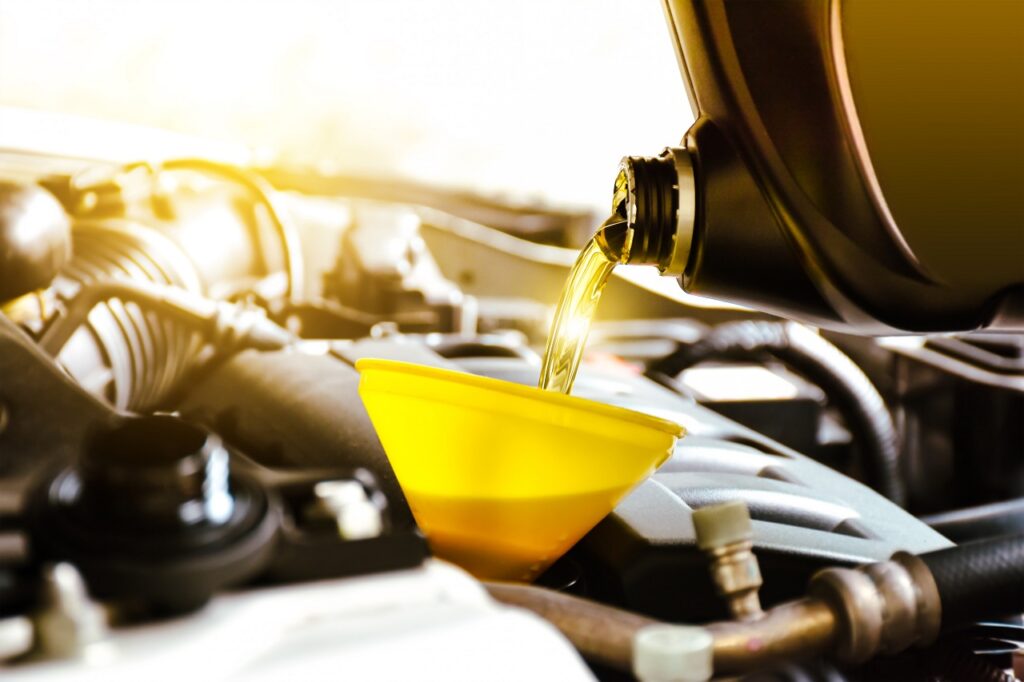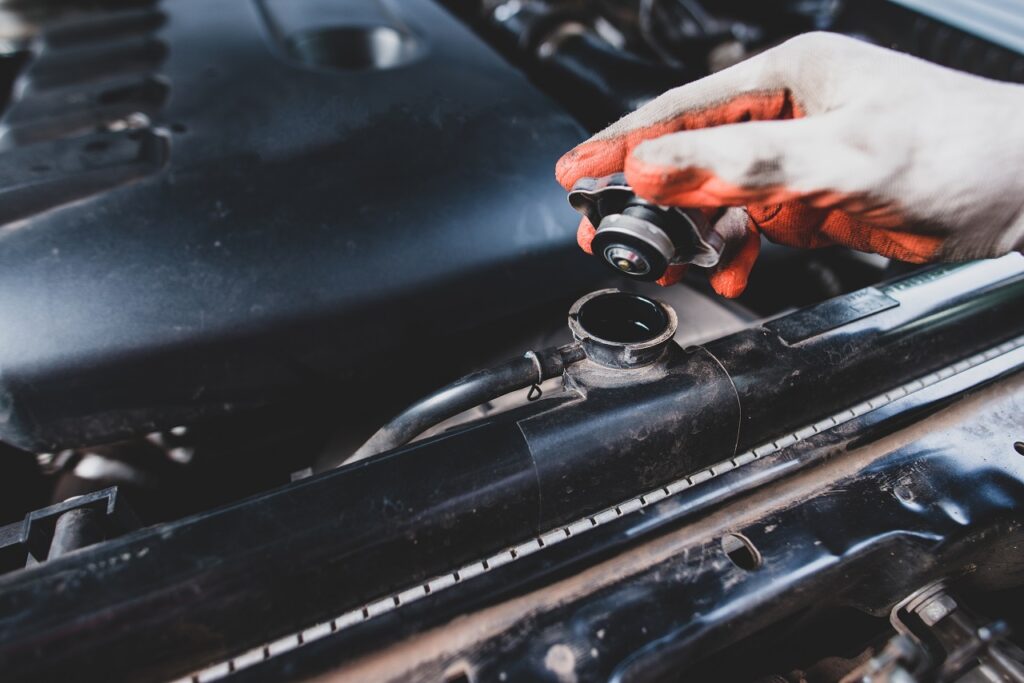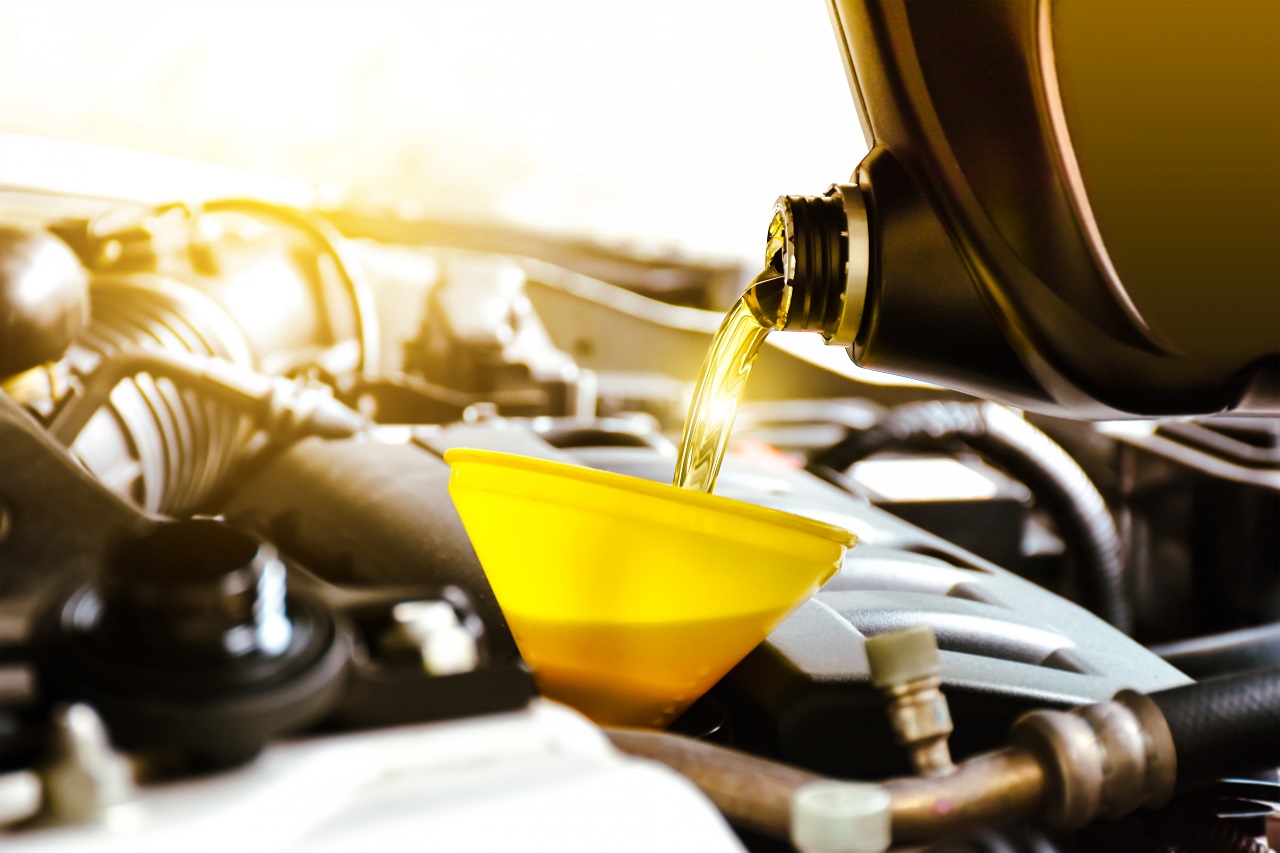Hello Memphis!
As the manager at Trustworthy Towing Service here in Memphis, TN, I’ve seen it all in my 20-plus years in the automotive industry. From the most intricate engine issues to the simplest tire changes, it’s my job to get stranded drivers back on the road, but I’m also passionate about helping people understand their vehicles better. After all, a little knowledge can prevent a lot of headaches down the line.
One of the topics that I find people often overlook is the different types of fluids in their vehicle. It’s easy to forget that your car isn’t just a hunk of metal, rubber, and plastic. It’s a complex system of interconnected parts, and just like the human body, it has a variety of “fluids” that keep it running smoothly.
These fluids are the lifeblood of your vehicle, each with a unique role to play. There’s engine oil that keeps everything lubricated, coolant that keeps the engine from overheating, brake fluid that helps you stop safely, and a few more that you might not even know about.
In this article, we’re going to dive into each type of fluid, what it does, and why it’s important. So, whether you’re a seasoned motorist or a newbie who’s still figuring out where the dipstick is, stick around. You’re bound to learn something that’ll help keep your vehicle running smoothly and avoid unnecessary trips to the mechanic (or a tow, even from friendly folks like us).
So sit back, grab a cup of coffee, and let’s talk vehicle fluids. It’s not the most glamorous topic but understanding it will make you a more informed driver.
And who knows? It might just save you from a breakdown on the side of the interstate one day.
Engine Oil
Next to the fuel that powers your engine, engine oil is arguably the next most important fluid in your car or truck. It’s designed to form a thin protective layer between moving parts, reducing friction, and preventing metal-to-metal contact.
Here’s how engine oil lubricates an engine:
- Lubrication: Engine oil is pumped throughout the engine to lubricate various components, such as the crankshaft, connecting rods, pistons, camshaft, and valve train. It forms a thin film of oil between these moving parts, reducing friction and wear.
- Reducing Friction: As the engine operates, the moving metal parts generate heat and friction. Engine oil’s lubricating properties create a slippery barrier between these parts, allowing them to move smoothly and reducing the amount of friction and heat generated.
- Cooling: Engine oil also helps in dissipating heat from the engine components. As it flows through the engine, it absorbs heat from the hot surfaces and carries it away, preventing excessive thermal stress and maintaining optimal operating temperatures.
- Cleaning: Engine oil acts as a cleaning agent, preventing the buildup of sludge, dirt, and other contaminants within the engine. It carries away these particles as it circulates, keeping the engine clean and preventing blockages that could hinder proper lubrication.
- Sealing: Engine oil helps seal the small gaps between piston rings and cylinder walls, preventing the combustion gases from leaking into the crankcase. It also forms a protective film on the cylinder walls, reducing wear and maintaining compression.
- Corrosion and Rust Prevention: Engine oil contains additives that protect engine components from corrosion and rust. These additives create a protective barrier on metal surfaces, safeguarding them against harmful oxidation and moisture damage.
The Difference Between Synthetic and Conventional Engine Oil

When it comes to engine oil. You basically have two options: conventional and synthetic.
Synthetic oil is designed to provide superior performance and protection for your engine compared to conventional oil. Unlike conventional oil, which is derived from crude oil through basic refining processes, synthetic oil is created through a complex manufacturing process that results in a more consistent and higher-quality product.
Synthetic oil is more costly than conventional oil, however it offers several advantages.
It’s formulated to have better resistance against breakdown, maintains its viscosity (thickness) more effectively across a wide range of temperatures, and provides enhanced lubrication even under high heat and stress conditions. These properties contribute to improved engine performance, reduced wear and tear, and better protection against deposits and sludge buildup.
As you’ll see below, you don’t have to change it as often either…
Oil Change Intervals
While the recommended oil change interval will vary depending on factors such as driving conditions, vehicle age, and manufacturer specifications, the approximate change intervals for Synthetic and Convential oils are below:
- Sythentic Oil: 7,500 to 10,000 miles (12,000 to 16,000 kilometers) or every 6 to 12 months, whichever comes first.
- Conventional (Standard) Engine Oil: Should be changed every 3,000 to 5,000 miles (4,800 to 8,000 kilometers) or every 3 to 6 months, depending on driving conditions and manufacturer recommendations.
Coolant / Antifreeze
Coolant/antifreeze, when mixed with water to create the coolant, performs several important functions in a vehicle’s cooling system:
- Heat Transfer: Coolant circulates through the engine, absorbing excess heat generated by the combustion process. It carries the heat to the radiator, where it is dissipated into the surrounding air. This process helps regulate the engine’s operating temperature and prevents overheating.
- Freeze Protection: The antifreeze component of the coolant mixture lowers the freezing point of the coolant. This prevents it from solidifying in the cooling system during cold weather, protecting the engine and cooling system components from damage caused by ice formation.
- Boiling Point Elevation: Coolant/antifreeze elevates the boiling point of the coolant mixture. By raising the temperature at which the coolant starts to boil, it helps prevent the formation of steam bubbles that can lead to overheating and engine damage.
- Corrosion Prevention: Coolant/antifreeze contains additives that protect the various metals and materials within the cooling system from corrosion. These additives form a protective layer on internal surfaces, preventing rust and corrosion that could impair cooling system efficiency.
- Lubrication: Some coolants include lubricating agents that help reduce friction and wear within the water pump and other cooling system components. This promotes smooth operation and extends the lifespan of these parts.
Engine Coolant Change Interval Recommendations

As a general guideline, it is often recommended to change engine coolant approximately every 2 to 5 years, or every 30,000 to 50,000 miles (48,000 to 80,000 kilometers), whichever comes first.
The interval for changing engine coolant can vary based on factors such as the type of coolant used (e.g., traditional green coolant or long-life coolant), driving conditions, and the specific requirements of your vehicle’s cooling system. Some modern vehicles may have extended coolant change intervals, while others may require more frequent changes.
Regular inspections of the coolant’s condition are important as well. If you notice signs of coolant contamination, such as discoloration, debris, or a sour smell, it may indicate the need for a coolant change, regardless of the mileage or time interval.
To ensure the best maintenance practices for your vehicle’s cooling system, it is always recommended to consult the vehicle manufacturer’s guidelines for the specific recommended coolant change interval.
Brake Fluid
Brake fluid is a vital component of the hydraulic braking system in a vehicle, which allows efficient and reliable braking. Here’s how brake fluid works:
- Transfer of Force: When you press the brake pedal, a piston inside the master cylinder exerts force on the brake fluid, creating hydraulic pressure.
- Transmission of Pressure: The brake fluid, under pressure, is transmitted through brake lines and hoses to the brake calipers or wheel cylinders at each wheel.
- Application of Force: At the wheels, the hydraulic pressure from the brake fluid causes the brake calipers to squeeze the brake pads against the brake rotors (in disc brakes) or the wheel cylinders to push the brake shoes against the brake drums (in drum brakes).
- Friction and Slowing Down: The resulting friction between the brake pads and rotors, or brake shoes and drums, creates resistance that slows down or stops the rotation of the wheels, ultimately bringing the vehicle to a halt.
- Heat Dissipation: During braking, the kinetic energy of the vehicle’s motion is converted into heat energy. Brake fluid plays a crucial role in transferring this heat away from the braking system, preventing overheating and maintaining braking performance.
- Hydraulic Efficiency: Brake fluid is designed to have excellent hydraulic properties, such as low compressibility and high boiling point, which ensure consistent and responsive brake pedal feel, even under demanding braking conditions.
It’s important to note that brake fluid is hygroscopic, meaning it readily absorbs moisture from the air over time. Moisture contamination can lead to reduced braking performance and potential damage to brake components. Therefore, regular brake fluid maintenance, including flushing and replacement as recommended by the vehicle manufacturer, is necessary to maintain the effectiveness and reliability of the braking system.
Brake Fluid Changing Interval
The recommended interval for changing brake fluid can vary depending on several factors, including the vehicle manufacturer’s guidelines, driving conditions, and the type of brake fluid used. It’s important to refer to your vehicle’s owner’s manual for the manufacturer’s specific recommendations. However, here are some general guidelines:
- Time-Based Interval: Brake fluid is hygroscopic, which means it absorbs moisture from the surrounding air over time. Moisture can degrade the performance of the brake fluid and affect braking efficiency. As a result, it is generally recommended to change the brake fluid every 2 to 3 years, regardless of mileage. This time-based interval helps ensure that the fluid remains in optimal condition.
- Mileage-Based Interval: In addition to the time-based interval, some manufacturers may also provide mileage-based recommendations for changing brake fluid. This can vary, but a common guideline is to change the brake fluid every 30,000 to 50,000 miles (48,000 to 80,000 kilometers). However, it’s crucial to consult your vehicle’s owner’s manual for the specific recommendations for your make and model.
- Severe Driving Conditions: If you frequently drive in severe conditions, such as towing heavy loads, driving in mountainous or hilly areas, or driving in stop-and-go traffic, it may be necessary to change the brake fluid more frequently. These conditions can cause the brakes to work harder and generate more heat, which can accelerate the fluid’s degradation. In such cases, it might be recommended to change the brake fluid more often, such as every 15,000 to 30,000 miles (24,000 to 48,000 kilometers).
- Near Salt Water: In areas where salt is used on roads during winter or in coastal regions with high salt content in the air, the likelihood of moisture ingress into the brake fluid is increased. This can accelerate the degradation process and decrease the overall lifespan of the brake fluid. Additionally, the presence of salt water or salt in the air can contribute to corrosion of brake system components, such as brake lines, calipers, or master cylinders. Corrosion can lead to leaks or other brake system failures, further compromising the effectiveness of the brake fluid.
It’s important to note that these are general guidelines, and the specific recommendations for your vehicle may differ. Always refer to your vehicle’s owner’s manual or consult with a qualified mechanic for the manufacturer’s recommended brake fluid change interval. Regular inspection of the brake fluid’s condition, such as checking for discoloration or contaminants, is also important to ensure safe and reliable brake operation.
Transmission Fluid
While it doesn’t get as much focus as say, your engine oil, the transmission fluid is critical in ensuring that the intricate timing between all those gears, shafts, and clutches in your tranny efficiently transfer the engine power to the wheels, thereby allowing your vehicle to move forward or backward at varying speeds. It achieves this by shifting gears to match the engine’s speed and torque output with the desired driving conditions.
Whether you’re accelerating from a standstill or cruising on the highway, the transmission ensures the engine’s power is optimally utilized.
For your transmission to function flawlessly, it needs proper lubrication, cooling, and protection.
That’s where transmission fluid steps in.
Transmission fluid acts as a vital lubricant, reducing friction and wear between these moving parts, ensuring they operate smoothly and efficiently. It also helps dissipate the heat generated during transmission operation, preventing overheating and maintaining optimal temperatures for peak performance.
But transmission fluid doesn’t stop there. It also plays an important role in enabling smooth gear changes. By creating hydraulic pressure, it facilitates the shifting of gears, ensuring a seamless transition between different speeds and driving conditions.
When to change? Again, it depends…
The recommended frequency for changing transmission fluid can vary depending on several factors, including the vehicle manufacturer’s guidelines, the type of transmission (manual or automatic), driving conditions, and the fluid type used. It’s essential to consult your vehicle’s owner’s manual for the manufacturer’s specific recommendations. However, here are some general guidelines:
- Manual Transmissions: For vehicles equipped with manual transmissions, the interval for changing the transmission fluid is typically longer compared to automatic transmissions. It is commonly recommended to change the fluid every 30,000 to 60,000 miles (48,000 to 96,000 kilometers). However, it’s still crucial to refer to the manufacturer’s recommendations specific to your vehicle.
- Automatic Transmissions: The recommended interval for changing automatic transmission fluid can vary widely. In the past, it was often recommended to change the fluid every 30,000 to 60,000 miles (48,000 to 96,000 kilometers). However, many modern vehicles now have “lifetime” or “long-life” transmission fluids that are designed to last longer. In these cases, the manufacturer may not provide a specific change interval, but it’s still important to periodically inspect the fluid and follow any recommendations for testing or maintenance provided in the owner’s manual.
- Severe Driving Conditions: If you frequently operate your vehicle in severe driving conditions, such as towing heavy loads, driving in extreme temperatures, or stop-and-go city driving, it may be necessary to change the transmission fluid more often. Severe driving conditions can cause the transmission to work harder and generate more heat, which can degrade the fluid faster. In such cases, it might be recommended to change the fluid more frequently, such as every 15,000 to 30,000 miles (24,000 to 48,000 kilometers).
Power Steering Fluid
Power steering fluid assists the driver in turning the steering wheel with less effort. It acts as a hydraulic medium, transmitting force and pressure within the power steering system.
Additionally, it lubricates and cools the power steering components, reducing friction and preventing excessive heat.
How Power Steering Fluid Works
The power steering pump, driven by the engine, pressurizes the power steering fluid. The pressurized fluid flows through hydraulic lines to the power steering gear or rack. As the driver turns the steering wheel, the pressurized fluid enters a chamber, creating a mechanical force that assists in turning the wheels.
After assisting in turning, the fluid returns to the pump through a return line for cooling and recirculation.
When to Change Power Steering Fluid
While specific recommendations vary among vehicle manufacturers, a general guideline is to change the power steering fluid every 50,000 to 75,000 miles (80,000 to 120,000 kilometers) or every 3 to 5 years, whichever comes first. However, it’s crucial to refer to the vehicle manufacturer’s recommendations stated in the owner’s manual or maintenance schedule for the most accurate information.
Regular inspections of the power steering fluid’s condition are also important. If the fluid appears dark, murky, or has a burnt smell, it may indicate the need for a fluid change, regardless of the mileage. Additionally, certain driving conditions, such as towing heavy loads, driving in extreme temperatures, or dusty/off-road environments, can accelerate fluid degradation, necessitating more frequent fluid changes.
Please note that the estimate provided should be used as a general guideline, and it’s essential to consult the specific recommendations of your vehicle manufacturer for the most accurate information regarding when to change the power steering fluid.
Keep Those Fluids Topped Up and Call Trustworthy Towing Today!
Well we’ve taken quite a journey under the hood of our vehicles today, haven’t we? We’ve got down and dirty with engine oil, kept our cool with coolant, braked down the technicalities of brake fluid, and navigated the rest of our vehicular vascular system.
Understanding the different types of fluids in your vehicle is a crucial part of car ownership. By keeping an eye on these fluids, you can ensure your vehicle stays healthy, runs smoothly, and keeps you safe on the road. And remember, a well-maintained vehicle not only lasts longer but also saves you money in the long run.
Even as we wrap up, remember that learning about your vehicle is an ongoing journey. There’s always more to learn, more ways to improve, and more preventative steps to take. So keep asking questions, keep exploring, and most importantly, keep up with your vehicle’s maintenance.
But, hey, we all know that even the best-maintained cars can have off days. If you ever find yourself stuck on the side of the road, don’t hesitate to give us a ring at Trustworthy Towing Service. We’re here to lend a hand (or a tow) when you need it most.
From all of us here in Memphis, drive safe, stay curious, and take care of your vehicles. They’re more than just machines, they’re our reliable companions on the road of life.




